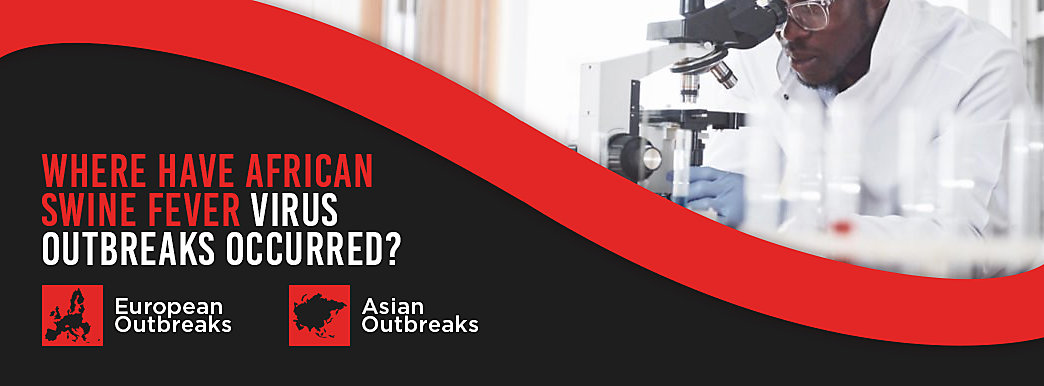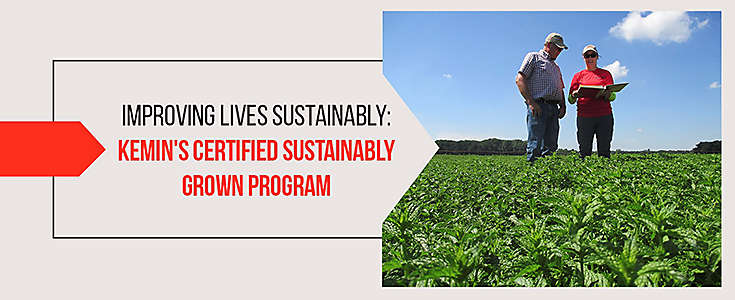Where Have African Swine Fever Virus Outbreaks Occurred?
African Swine Fever virus has a long history, mostly affecting Europe, Asia and Africa. While the disease was originally identified in Kenya in the 1920s, African Swine Fever virus has spread through several countries, including several European countries, China, Cambodia and Vietnam.
1. European Outbreaks
African Swine Fever virus was restricted to Africa until 1957, when an outbreak was reported in Portugal. Though this initial outbreak was controlled and eradicated, a second outbreak in 1960 resulted in African Swine Fever virus becoming endemic to Portugal and Spain until 1995.
From Portugal and Spain, African Swine Fever virus spread to other European countries, including the Netherlands, Italy, France and Belgium. In the mid-1990s, there was a widespread effort to eradicate the disease outside of the African continent through pathogen control on farms, which was largely successful for all non-African countries. The exception was the isolated island of Sardinia, Italy, in which African Swine Fever virus has been continuously present since 1978.
A second transcontinental spread from Africa to the East European country of Georgia occurred in 2007. This highly virulent African Swine Fever virus strain, known as Georgia 2007/1 or ASFV-G, spread rapidly through the Caucasus region and to neighboring Eastern European countries. The Georgia 2007/1 strain has proven extremely difficult to eradicate and continues to impact the region today.
The Georgia 2007/1 spread was mostly attributed to the wild boars of the region — From 2015 to 2017 alone, studies found nearly 8,000 African Swine Fever virus -positive wild boars in Poland and the Baltic states. However, studies have also shown that ASFV-G can replicate in Ornithodoros erraticus ticks, meaning ticks may be partially responsible for the resilience of African Swine Fever virus in this region.
The Georgia 2007 outbreak has led to the current outbreaks of African Swine Fever virus, which affect a large portion of Eastern Europe and the eastern territory of the European Union, including Russia, Ukraine, Poland, Latvia, Lithuania, Estonia, Moldova, the Czech Republic and Romania. Between 2014 and 2017, almost 800,000 pigs have died as a result of the disease in these countries, either through infection or culling.
Recently, African Swine Fever virus has gained momentum and is starting to affect even more countries. In a major jump of the disease, likely carried by wild boar which were relocated for hunting, African Swine Fever virus traveled over 1,000 km from the Eastern European countries to Belgium in 2018. African Swine Fever virus is contained in an area around the Belgian/French border, and both countries are currently employing stringent African swine fever preparedness and prevention methods to keep the disease at bay, primarily using fencing and biosecurity solutions.
At present, plans for African Swine Fever virus in Europe rely on strict national and farm biosecurity — the hope is that the ASF virus will eventually die out from the wild boar population, slowing the spread of the disease. After this point, professionals can step in and use an intense hunting procedure to clear out the remaining wild boar population to reduce African Swine Fever virus and eventually eradicate it from the area.
2. Asian Outbreaks
The incidence of African Swine Fever virus in Asia started in August 2018, when an outbreak in China caused the death, directly or indirectly, of more than 1 million pigs. The China 2018 outbreak spread rapidly across the country, impacting backyard farms, mid-sized operations and large-scale commercial operations alike. As of July 2019, the outbreak has impacted 32 provinces and resulted in the culling of almost 1.2 million pigs.
From China, the disease spread to Vietnam, Cambodia, Mongolia and Laos. Infected products have also been found in South Korea, Japan, Taiwan and Australia. This outbreak hit Vietnam particularly hard, since pork accounts for three-quarters of Vietnam's meat consumption, and over 1.2 million pigs, accounting for 4 percent of the total population in Vietnam, have died as a result of the disease.
The first case of African Swine Fever virus was recently confirmed in North Korea on May 25, 2019, leading to the deaths of 70 pigs and the culling of another 20. Despite international efforts to control African Swine Fever virus in this region, the virus continues to spread in Southeast Asia.










